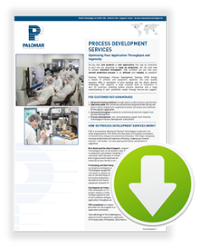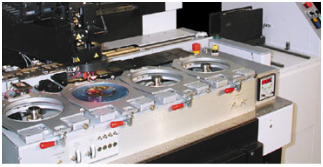“IMS is THE place to be for high reliability packaging!” was the IMS Insider tweet from Palomar Technologies—and a very true statement indeed. The IEEE MTT International Microwave Symposium (IMS) 2013 was another successful year for the annual international meeting for technologists involved in all aspects of microwave and radio frequency (RF) design, process and manufacturing.
IMS is THE place to be for high reliability packaging! @palomartech, #ims2013 #imsinsider twitter.com/MTT_IMS/status…
— MTT_IMS (@MTT_IMS) June 5, 2013
As IMS Insiders, Palomar’s Bradley Benton and David Rasmussen showcased the importance of high-reliability production equipment for RF device packaging.
|
RF applications require great attention to detail when packaging. The higher the frequency at which the package operates, the more critical the die and wire placement becomes. RF modules are among the most complex of all electronic devices, consisting of a myriad of discrete components and specialized ICs designed to run at very high frequencies to satisfy the extended bandwidth requirements of modern telecommunications and computing. Because the effects of stray inductance and capacitance in an electronic circuit become much more pronounced at higher frequencies, the RF module must be designed and fabricated to control these effects. |
 |
|
Digital to analog conversion, and vice-versa, has further complicated the RF package. Higher frequency considerations become the challenge for not just the designer, but also for the process engineer and operator who must consistently build to very tight tolerances. In the world of sub-nanoseconds and operating frequencies soaring over 1 GHz, expertise in this field is more valuable than ever. |
 |
One solution to meet the stringent requirements of RF device packaging is through a HotRail Radio Frequency Assembly (RFA), which enables the RF component manufacturer to achieve precision side-by-side placement of die for subsequent wire bonding of consistent wire loop profiles. Repeatable wire loop profiles are essential for meeting high frequency, RF device impedance specifications. The Hotrail RFA provides precision juxtaposition of die with steady-state heat eutectic processing, resulting in consistent wire loop bonding profiles from bond to bond. The image below shows an example of a HotRail system with cartesian X-Y placement head, eutectic processor, die ejectors and output handler.

There are many benefits derived from using the HotRail RFA. These advantages include quick and easy vacuum tool changeover for a wide range of parts and die during production. Up to eight eutectic collet or conical tip vacuum bond tools may be mounted and pre-calibrated in the bond head. Tools are changed "on the fly", speeding up assembly of multi-chip devices and eliminating the need for a space-consuming tool dock. This capability helps maximize production speed and yield over time.
Careful handling of fragile parts and die is achieved via programmable force (10 to 400 grams in 1 gram increments), programmable approach speed and deceleration, and programmable over-travel (in 0.1 mil increments). This helps to maximize product yield and performance, and minimize loss due to broken or impaired parts.
Learn More About RF Device Packaging
|
Automated Assembly Tool for Precision, High-Speed RF Die |
RF, Microwave, and Optoelectronic Packaging Die and Wire Bonding Case Studies |
----
Jessica Sylvester
Marketing Communications Manager
Palomar Technologies, Inc.

